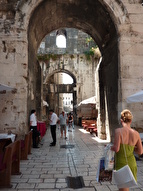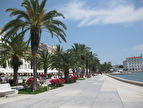Split
Split is the main city in Central Dalmatia, the largest city in Croatia after Zagreb. Originality of Split is the palace of the Roman emperor Diocletian built between the years 294 and 305. A lively Mediterranean city in a region with authentic islands.
What to see and visit in Split
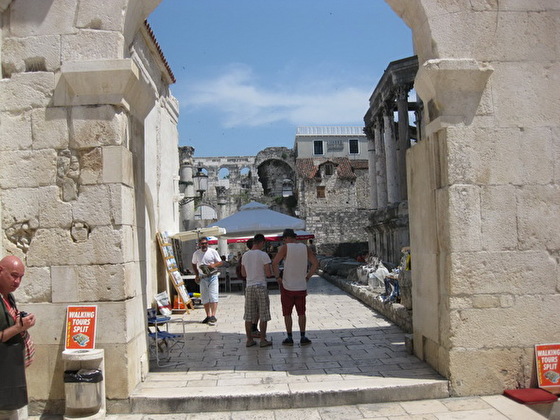
- The Palace of Diocletian: historic core of the city. A maze of alleys in a harmonious setting of stone buildings, inscribed on the World Heritage List of UNESCO. Initially residence of the emperor who built this luxurious palace to spend a peaceful retreat in the Bay of childhood.
Do not miss :
- The Peristylein the center of the palace, square connected to the shore by an underground and surrounded by the Cathedral St.Dujam, built on the mausoleum of Emperor.
- People's Square (Narodni trg) which was the center of the medieval town and where is the Gothic town hall with a beautiful loggia and the clock tower.
- The four gates of the city, including the Golden Gate i, front of which stands a gigantic bronze statue of Gregory ofNin, the bishop who obtained the celebration of Masses in Croatian (and not in Latin); it is customary to touch his toe to bring good luck.
· The Riva: must walk along the maritime front of the palace, always friendly bustling place, with its outdoor cafes and many benches for a nice break.
· The Marijan park overlooking the city: huge green space and panoramic views as a reward for the effort of the climb. Small curiosity at the entrance of the park: the old Jewish cemetery abandoned.
· The Varos area at the foot of Marijan park, old neighborhood popular with steep streets. A lsurrouding of old stone houses and some small chapels.
· The Marmontovastreet, shopping street between Riva and the Theatre Square, so named in honor of the French marshal Marmont. Towards the middle of the street, you can not miss the fish market.
· The place of the Republic or place of Prokure open sea side, characterized by its red walls lined with arcades.
· The colorful market between the palace and the port.
· Bacvice Beach: city center beach near the popular port where inhabitants go when the weather is sunny. You will discover the local specialty: the 'picigin' ball game in the shallow sea, which engage young people throughout the year.
Around Split
- Trogir: located 25 kilometers north of Split, this small town is like an outdoor museum, a World Cultural Heritage of UNESCO. Small island of 750 strides long, this medieval city founded in the 3rd century features architectural treasures including the Romanesque cathedral famous for its portal, the monastery St.Nicolas, palaces, churches and squares. There are lot of visitors in summer but the city is a must.
- Fortress Klis:15 km from Split, the fortress was built in ancient times on a rock with steep walls. Its irregular shape is determined by the geomorphology of the cliff and its name comes from the Greek, meaning: the key to Dalmatia. It had a defensive strategic role in Croatian history, particularly in the fight against the Turks.
- The ancient city of Salona, birthplace of the Emperor Diocletian in Solin in the northern suburb of Split. At that time it was a thriving city which counted until 60000 inhabitants. The mains that are found there made Salona as one of the great archaeological sites of Roman: part of the wall with the door of Caesar, the amphitheater, the necropolis. A small museum was built with the excavated items.
- The natural park of Biokovo: the highest mountains of Dalmatia which peaks at 1762 m. Pine forests, beech, oak or bare rock cover its steep slopes. A paved road leads to the sea at the top, passable only in the day.The park is famous for its rare specimens of flora and offers a unique view of one side of the islands of Brac and Hvar, on the other side to the lakes of the region of Zagora inside.There are hiking trails,cycle paths, mountain huts and shepherds huts remains.
- The Cetina river flows through the long valley between the two parallel chains of mountains: Mount Svilaja and the Dinaric massif. Long 105 kms, it flows through the passes and canyons in lush vegetation sometimes forming green tunnels, before flowing into the sea near Omis south of Split.The alternation of calm water and white water with rapids and waterfalls make it a breeding ground for lovers of canoeing and rafting. Many agencies organize trips on Cetina.
- The authentic islands Brac, Solta, Hvar and Vis; each one has its personality, all of them have untouched nature, olive groves and vineyards fields and villages of stone houses, preserved traditions and an undeniable charm.
Brac island of white stone, olive trees, remnants of medieval life; Hvar island of lavender, herbs, shepherdhuts and rich architectural and cultural heritage;Solta island of scrub, honey and serenity; Vis is know for Hellenic site ad blue cave.
Beaches in Split and around
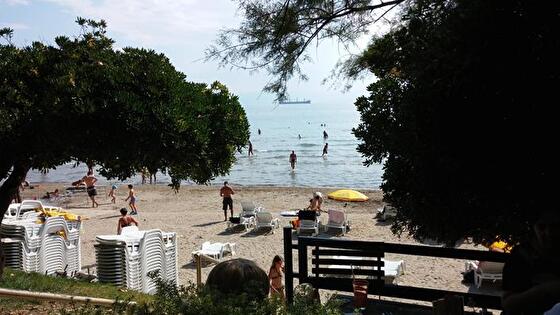[2].jpg)
The city of Split has several beaches on its territory:
- below Mount Marijan, the Kastelet beach and a little further to the tip of the peninsula the beach Kasuni are sheltered bays of small pebbles in a quiet environment.
- near the harbor, the beach Bacvice is the most popular, with its cafes, chairs and umbrellas, children's games...it is a sandy beach with concrete parts.
- all the way to the south, the small beaches succeed to the Znjan pebble beach, about 5 kms, a popular beach rather for families and young people, with cafes, restaurants, children's playground, complete equipment and access for disabled people.
- Riviera Omis extends about 30 kilometers south of Split and has beautiful sandy beaches.The municipal beach in Omis is a long sandy beach of 1 km, lined with cafes, shops, restaurants, popular among families with children.
- Makarska Riviera 60 km of white pebble beaches, most shaded by pine trees, in a succession of seaside resorts.Brela beach is one of the best known, characterized by its rock surmounted by a pine and emerging from the sea.
- The famous Zlatni Rat beach in Bol on Brac Island, this specific pebble beach whose point changes its shape depending on the currents. In a green environment but busy in high season.
- On the island of Hvar, the southern coves and bays, the sandy beach of the bay Mlaska in Sucuraj or the famous festive beach Carpe Diemin the town Hvar.
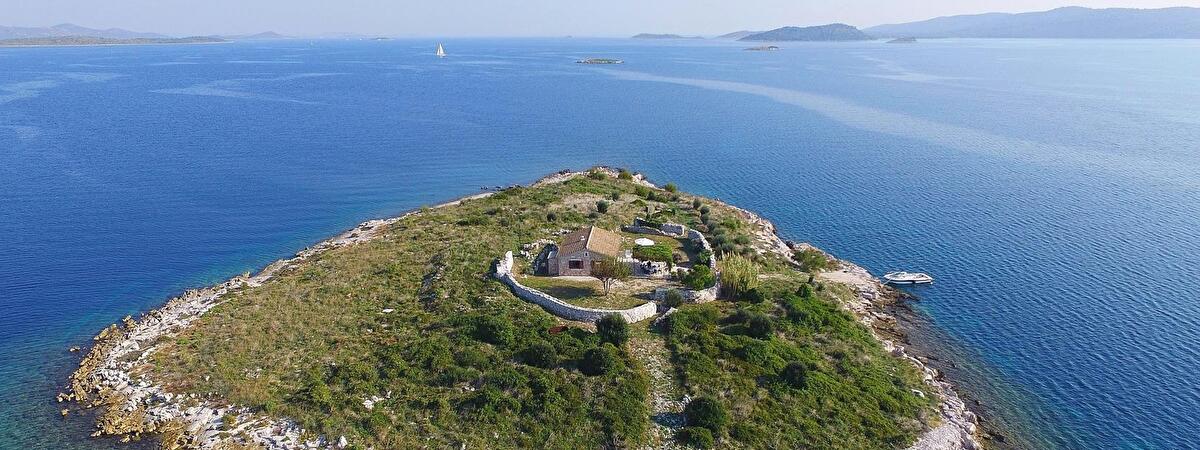 (Copy).jpg)
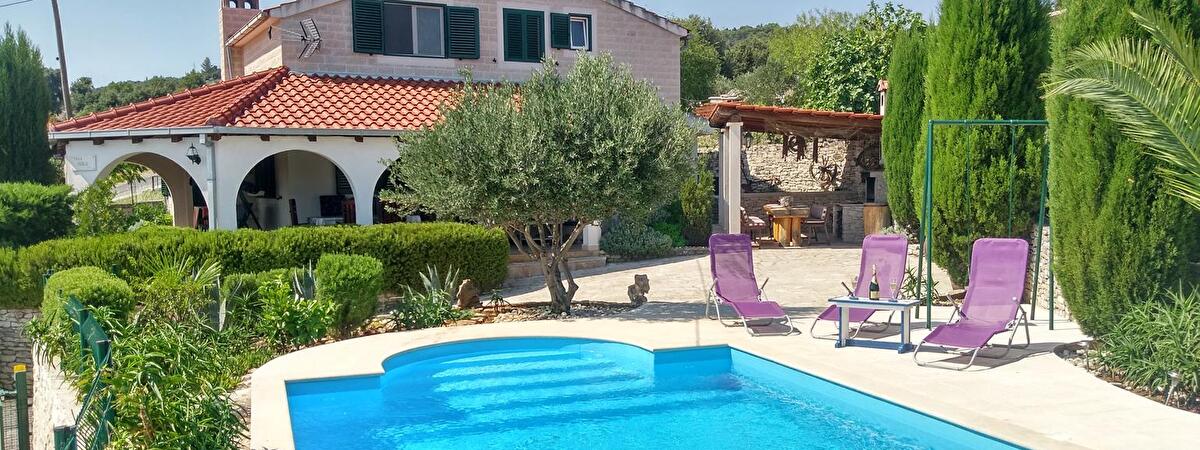 (Copy).jpg)
[1].jpg)
